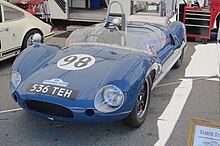
Maurice Bienvenu Jean Paul Trintignant was a motor racing driver and vintner from France. He competed in the Formula One World Championship for fourteen years, between 1950 and 1964, one of the longest careers in the early years of Formula One. During this time he also competed in sports car racing, including winning the 1954 24 Hours of Le Mans race. Following his retirement from the track Trintignant concentrated on the wine trade.

The Cooper Car Company is a British car manufacturer founded in December 1947 by Charles Cooper and his son John Cooper. Together with John's boyhood friend, Eric Brandon, they began by building racing cars in Charles's small garage in Surbiton, Surrey, England, in 1946. Through the 1950s and early 1960s they reached motor racing's highest levels as their rear-engined, single-seat cars competed in both Formula One and the Indianapolis 500, and their Mini Cooper dominated rally racing. The Cooper name lives on in the Cooper versions of the Mini production cars that are built in England, but is now owned and marketed by BMW.
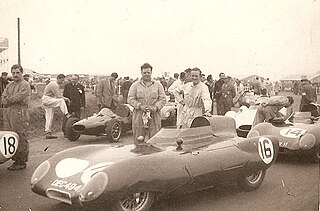
Henry Clifford "Cliff" Allison was a British racing driver from England, who participated in Formula One during seasons 1958 to 1961 for the Lotus, Scuderia Centro Sud, Ferrari and UDT Laystall teams. He was born and died in Brough, Westmorland.

Henry O'Reilly "Harry" Schell was an American Grand Prix motor racing driver. He was the first American driver to start a Formula One Grand Prix.

Roy Francesco Salvadori was a British racing driver and team manager. He was born in Dovercourt, Essex, to parents of Italian descent. He graduated to Formula One by 1952 and competed regularly until 1962 for a succession of teams including Cooper, Vanwall, BRM, Aston Martin and Connaught. Also a competitor in other formulae, he won the 1959 24 Hours of Le Mans in an Aston Martin with co-driver Carroll Shelby.

The Bugatti Type 57 and later variants was an entirely new design created by Jean Bugatti, son of founder Ettore. Type 57s were built from 1934 through 1940, with a total of 710 examples produced.
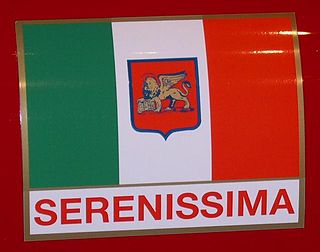
Scuderia Serenissima and Scuderia SSS Republica di Venezia were names used by Giovanni Volpi to enter his own cars in Formula One and sports car racing in the early 1960s.

Maserati A6 were a series of grand tourers, racing sports cars and single seaters made by Maserati of Italy between 1947 and 1956. They were named for Alfieri Maserati and for their straight-six engine.

Ecurie Ecosse was a motor racing team from Edinburgh Scotland. The team was founded in November 1951 by Edinburgh businessman and racing driver David Murray and mechanic Wilkie Wilkinson, its most notable achievement was winning the 1956 and the 1957 24 Hours of Le Mans. The team also raced in three Formula One races. Ecurie Ecosse's cars were always distinctive in their Flag Blue Metallic paint.

The Lotus 69 was an open-wheel formula racing car developed by Lotus in 1969 for use in Formula 2, Formula 3, and Formula Ford.

The Cooper-Climax T53 is a Formula One car built by British motorsport team Cooper, in 1960. It won the Formula One World Championship that year, being driven by Jack Brabham.
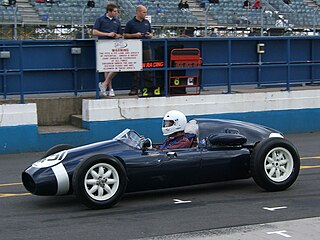
The Cooper T45 was a open-wheel formula racing car, developed and built by the Cooper Car Company in 1958, and designed by Owen Maddock. It competed in Formula 2 racing as well as in Formula One racing, where it won one World Championship Grand Prix, the 1958 Monaco Grand Prix, being driven by Maurice Trintignant.
The Zerex Special was a sports racing car. Originally a Cooper T53 built for the 1961 United States Grand Prix, it was rebuilt for usage in American sports car racing, and featured open-top bodywork. Initially using a 2.75-litre version of the Coventry Climax FPF straight-four engine, it later used a Traco-Oldsmobile 3.5-litre V8. The car won numerous races throughout its four-year career, being driven by drivers such as McLaren and Roger Penske.

The Cooper-Climax T55 is a Formula One car built by British motorsport team Cooper, in 1961. Its best result was a third-place podium finish for Bruce McLaren at the 1961 Italian Grand Prix. It debuted at the 1961 Monaco Grand Prix, and its last race was the 1965 South African Grand Prix. It was powered by the 170 hp (130 kW) naturally aspirated Coventry-Climax FPF four-cylinder engine.
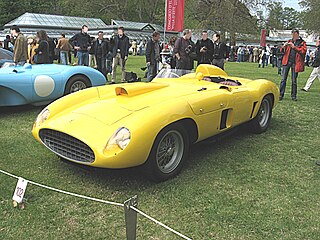
The Ferrari 410 S was a sports racing car produced by Ferrari in 1955–1956. After the racing successes of 375 Plus, mainly in 1954 Carrera Panamericana, Ferrari decided to prepare another model for this marathon. The 410 S was intended as a long-distance race car originally designed for the 1955 Carrera Panamericana and was the final model of the Lampredi V12 sports car lineage. The next generation of sports racing cars that replaced the 410 S were powered by the new Jano V12 engines.
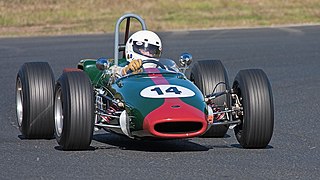
The Brabham BT14 was an open-wheel mid-engined formula racing car, designed, developed and built by British manufacturer and constructor Brabham, in 1965. A total of 10 models were produced. It was specifically constructed to compete in Formula Libre racing. It competed in motor racing between 1965 and 1968; winning a total of 10 races, scoring 22 podium finishes, and clinching 4 pole positions. It also contested the 1967 European F2 Championship season, competitng in 7 races, but with no success; scoring no wins, pole positons, podium finishes, or scoring any points. It was powered by a naturally-aspirated 1.6 L (98 cu in) Ford twin-cam four-cylinder engine, which droves the rear wheels through a conventional 4-speed manual transmission.
The Cooper-MG is a series of two MG-powered sports cars that were designed, developed and built by Cooper Cars between 1950 and 1953. They were called the Cooper T14 and the Cooper T21, respectively. They actively competed in motor racing between 1950 and 1961. In that period, the MG-powered Coopers scored a total of 23 wins and 82 podium finishes between the two cars, and 2 pole positions. They were both power by the 1,250–1,500 cc (76–92 cu in) MG XPAG engine.

The Cooper T60 is a Formula One racing car from the Cooper Car Company, which was used at events of this racing formula from 1962 to 1965.
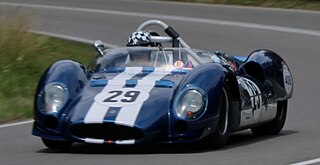
The Cooper T61 , also known as the Cooper T61 Monaco, or the Cooper Monaco T61, is a sports racing car, designed, developed and built by British manufacturer Cooper, in 1961. It is the successor and evolution of the T57. Its motor racing career spanned 6 years ; where it won a total of 16 races, achieved 23 podium finishes, and clinched 3 pole positions. It was powered by a number of different engines, including a Coventry Climax four-cylinder engine, a Maserati V8 engine, a Ford FE engine, and a Chevrolet small-block engine.

The JBW-Maserati, also known as the JBW Type 1, is a race car, designed, developed, and built by British manufacturer and constructor, JBW, in 1958. It raced in both open-wheel and closed-wheel guises. It competed in both Formula Libre events, as well as 4 Formula One World Championship Grand Prix races, between 1959 and 1961; debuting at the 1959 British Grand Prix, but unfortunately scored no points over that period of time. It was initially powered by a naturally-aspirated 2.5 L (150 cu in) Maserati 4-cylinder engine four-cylinder engine, which droves the rear wheels through a 5-speed manual transmission. It unfortunately scored no World Championship points during its time in Formula One racing.
